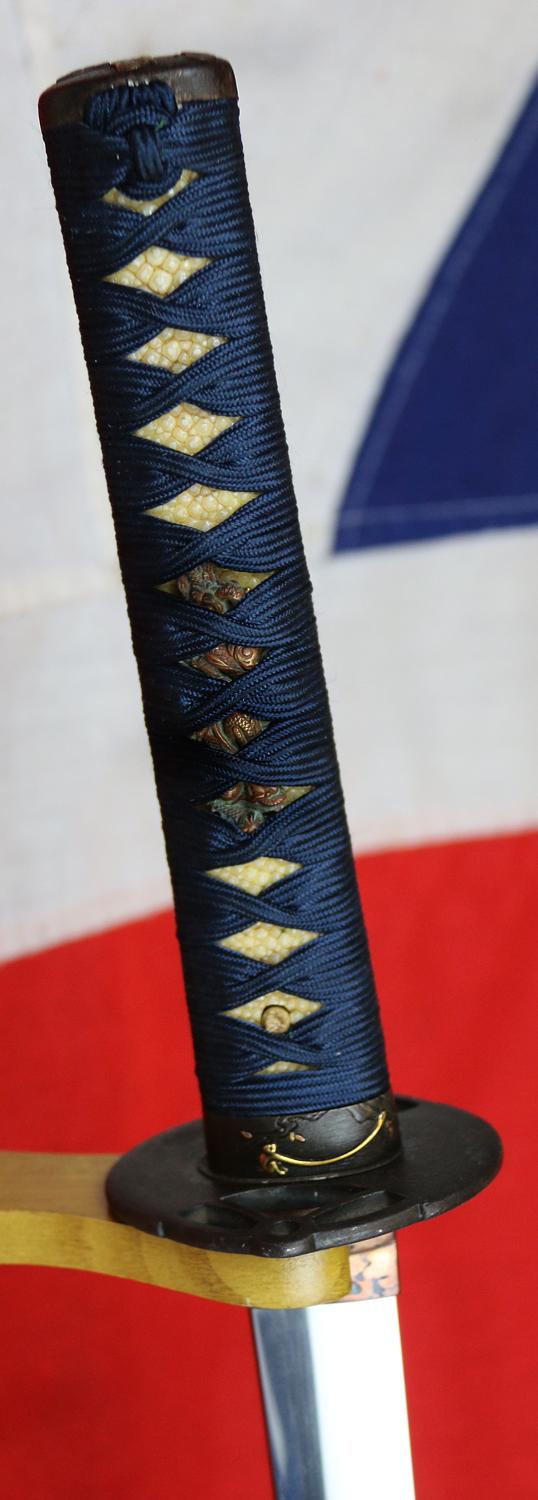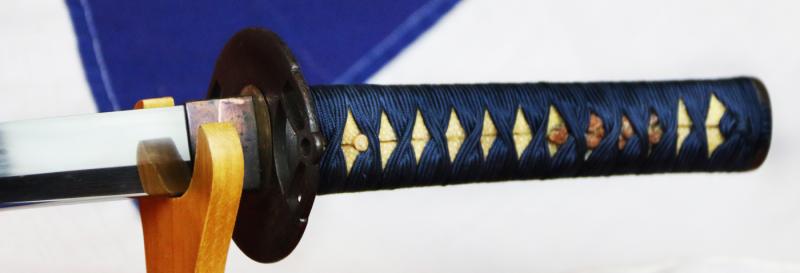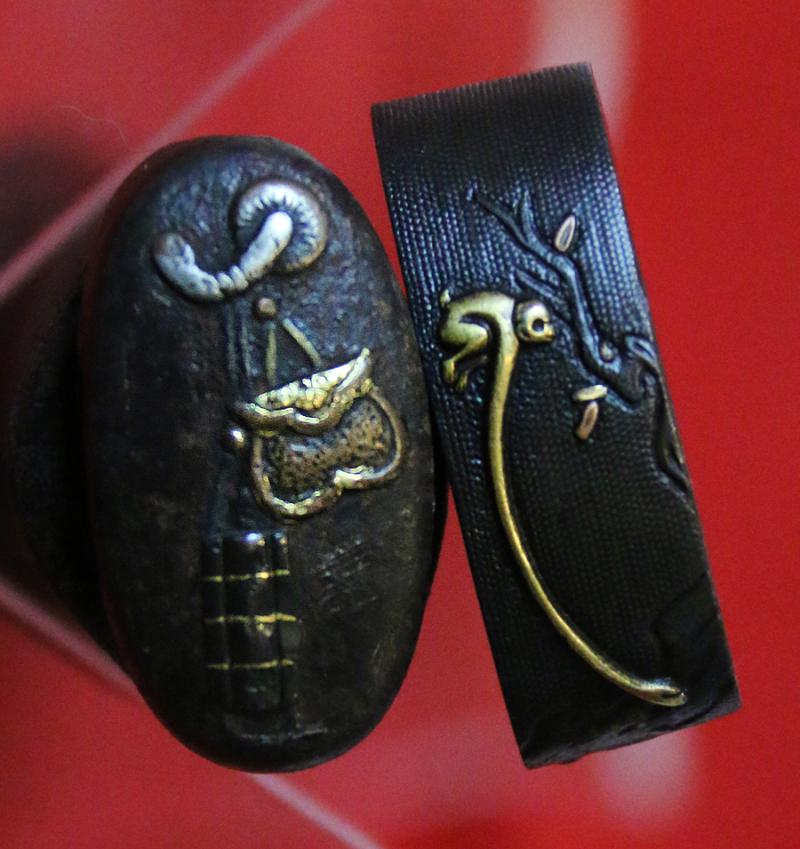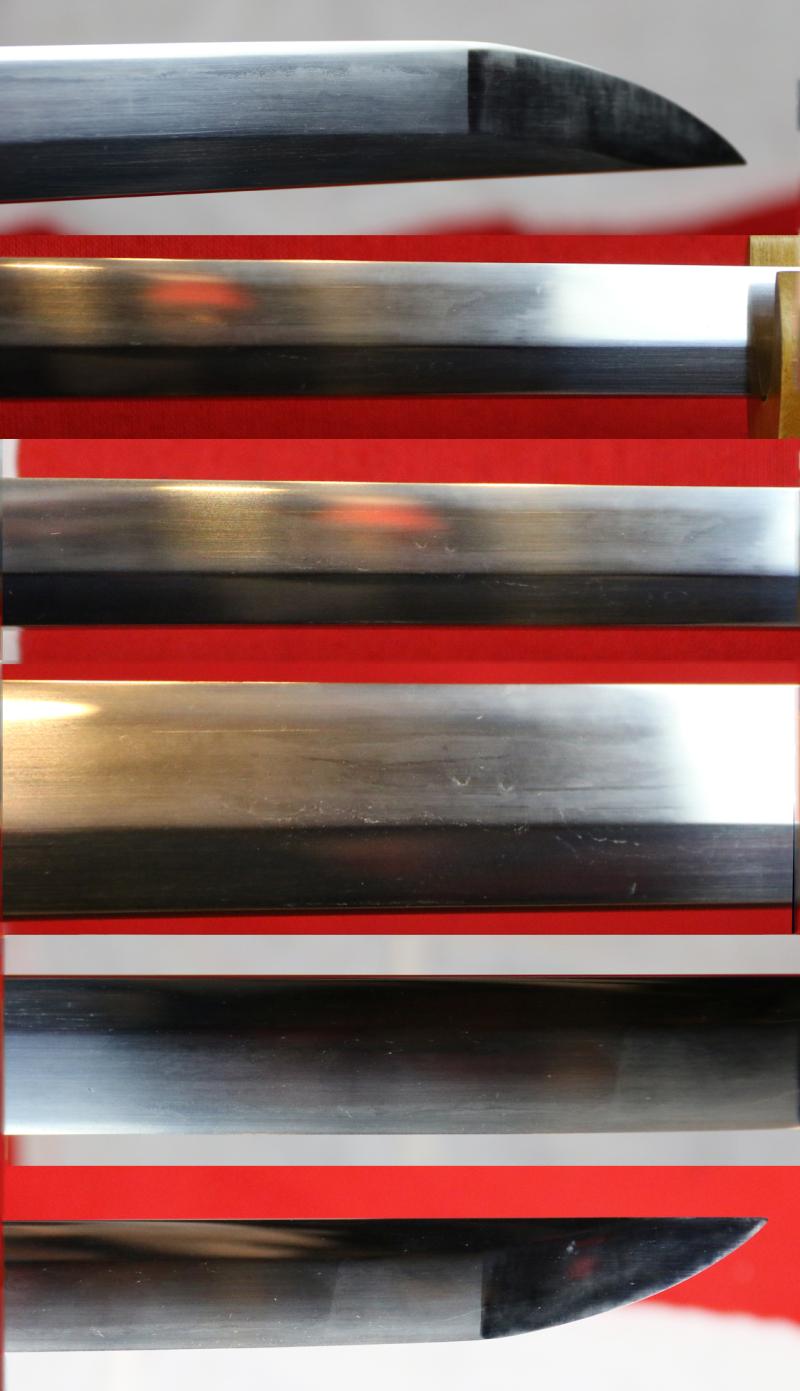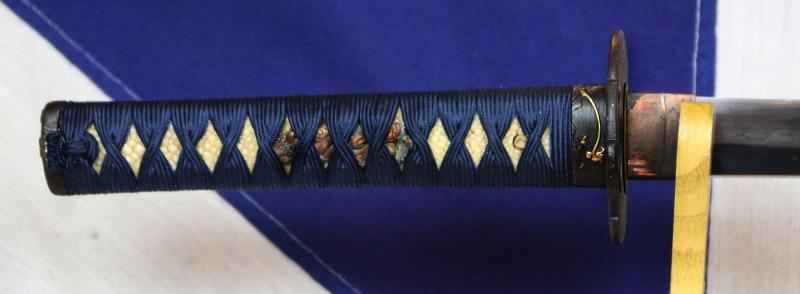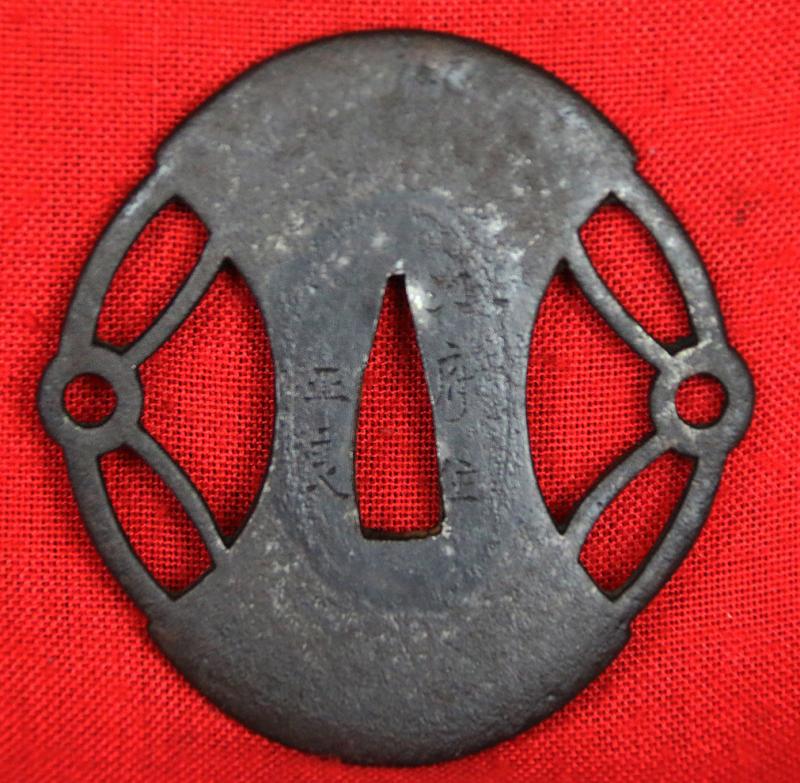A Superb Original Koto Samurai Katana, Circa 500 Years Old & Relatively Untouched Since Its Arrival In England in 1876. All Original Edo Koshirae {Sword Mounts and Fittings}. A Beautiful Blade in Near Pristine Condition with a Fine Suguha Hamon
Any visitor to our gallery-shop will know we are packed to the gunnels, from floor to ceiling, with thousands upon thousands of beautiful original antique or ancient historical pieces. In reality, probably the largest concentration of intriguing, original and wonderful stock, of its kind, within any shop in the whole of Europe.
This is a wonderful original samurai sword, with a beautiful 500 year old blade, that has lain untouched for over around 150 years. it's tsuka-ito was poorly perished so we have just expertly rebound with traditional, finest Japanese, indigo blue silk ito in the workshop, so it now looks just as it did in the 1870's, when it came to England, after the Satsuma rebellion in Japan. It has all its original mountings, of Edo period fuchigashira, fittings and tsuba, a pair of copper dragon form menuki, on the original giant rayskin {samegawa}, and its original, Edo period {1599 to 1868} saya, with its original black urushi ishime lacquer.
The fuchi is shakudo on a nanako ground, with a pure gold onlaid long armed monkey, attempting to grasp the reflection of the moon in a river from the boughs of a tree. This imagery is derived from a popular Buddhist story that warns how the spiritually unenlightened cannot distinguish between reality and illusion. The kashira is a tettsu ground decorated with a takebori relief samurai's tobacco pouch, inro, and netsuke, with gold and silver highlights. The tsuba is very nice indeed, in tettsu, o-sukashi form, and signed.
The name katana derives from two old Japanese written characters or symbols: kata, meaning side, and na, or edge. Thus a katana is a single-edged sword that has had few rivals in the annals of war, either in the East or the West. Because the sword was the main battle weapon of Japan's knightly man-at-arms (although spears and bows were also carried), an entire martial art grew up around learning how to use it. This was kenjutsu, the art of sword fighting, or kendo in its modern, non-warlike incarnation. The importance of studying kenjutsu and the other martial arts such as kyujutsu, the art of the bow, was so critical to the samurai, a very real matter of life or death, that Miyamoto Musashi, most renowned of all swordsmen, warned in his classic The Book of Five Rings: The science of martial arts for warriors requires construction of various weapons and understanding the properties of the weapons. A member of a warrior family who does not learn to use weapons and understand the specific advantages of each weapon would seem to be somewhat uncultivated. This fine samurai sword, like all true and original samurai swords, would have been the prize possession of every samurai that owned it. It would most likely have cost more than his home, and would certainly have been more important.
This is just one reason why fine Japanese sword steel, even of this tremendous age, is in such good state of preservation. When a katana such as this has been, for its entire existence, so highly revered, treasured and appreciated, it will have been cared for most sensitively and treated with the utmost respect during its entire life. In many regards it will have represented the only thing that stood between its samurai owner, of which there may have been 30 or more during this swords great history, and his ultimate downfall in a combat situation. The late Muromachi period was a time of continuous upheaval and war. The demand for swords was high and they needed to have excellent cutting ability
Condition; The blade is near faultless. All the mounts are in excellent condition for age. The original Edo saya has a carved buffalo horn kurikata {sageo cord mount} and has a very few, tiny, old surface marks
Code: 25612


